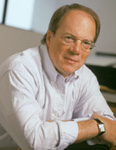 Wisconsin Lawyer
Wisconsin Lawyer
Vol. 84, No. 3, March 2011

When I first joined the State Bar staff more than 20 years ago, the State Bar held two conventions: the midwinter convention every January in Milwaukee and the annual meeting in June that moved around the state, from Lake Geneva to Oshkosh or Green Bay to La Crosse. In those “good old days,” as many as 1,300 lawyers attended the midwinter conventions and as many as 1,000 lawyers (sometimes with their families) attended the annual meetings. Attendance at the children’s programs occasionally topped 100. And then things started to change. In 1999, only three children attended the children’s program at the annual meeting, and numbers of attendees dropped to the 600 to 700 range each for the midwinter and annual gatherings.
The State Bar seldom broke even on the conventions even when attendance was high, but when the numbers started and continued to drop so dramatically, we knew something had to change. Other states’ bar associations were going through the same transition. Some moved to holding just one convention, and others stopped holding conventions altogether. The State Bar eliminated the midwinter convention with the hope that its 600 to 700 attendees would attend the annual meeting, but the annual meeting attendance never increased by those numbers.
Recent surveys show that members no longer are interested in the smorgasbord of CLE programs that was typical of conventions and annual meetings. Attorneys tend to focus on one or a few areas of law, and many said it was not worth the price of admission, literally, to attend a two- or three-day convention at which only one or two programs were relevant to them. The rise and relative success of specialized section retreats and the tremendous success of the annual solo and small firm conference further demonstrated that members are interested in attending multi-day programs focusing on only a few areas of the law.
This year, the State Bar is making the leap to just that. Instead of an annual meeting with a smorgasbord of CLE, the State Bar will hold two separate institutes in which the CLE programming concentrates on one or two practice areas.
Milwaukee’s Frontier Airline Center will host the first State Bar Institute on May 5-6 this year. Titled “Litigation, Dispute Resolution, and Appellate Practice Institute: From Claims Through Appeals,” this institute will bring together judges and leading lawyers from across the state to present on topics such as “Preserving Error Claims and Defending Victory,” “Taking Charge of Your Mediation Practice as a Mediator or Advocate,” and “How to Impress or Annoy a Judge: What You Should Know Before Going to the Courthouse.” Wisconsin Supreme court Justice Patience Roggensack and Judge Joan Kessler will join a panel on how the supreme court and the court of appeals decide to exercise their discretionary authority. And at the complimentary lunch, former Nixon White House deputy counsel Egil Krogh will draw on his experience from the Watergate scandal to provide concrete examples of threats posed to professional integrity in the practice of law.
In conjunction with swearing in new State Bar President James Brennan on the evening of June 8, the Real Estate and Business Law Institute will be held June 9-10, 2011, at the Kalahari Resort in the Wisconsin Dells. Issues such as the impact of modern energy controls on commercial-lease drafting, privacy issues and employee monitoring in the workplace, divorce and succession issues for business owners, the tax aspects of LLC formation, and dealing with unrepresented parties in a transaction are among the numerous topics for this two-day program.
So we have come full circle, from two conventions, to one convention, to two institutes, but with more focused, relevant CLE programming.
Wisconsin Lawyer
